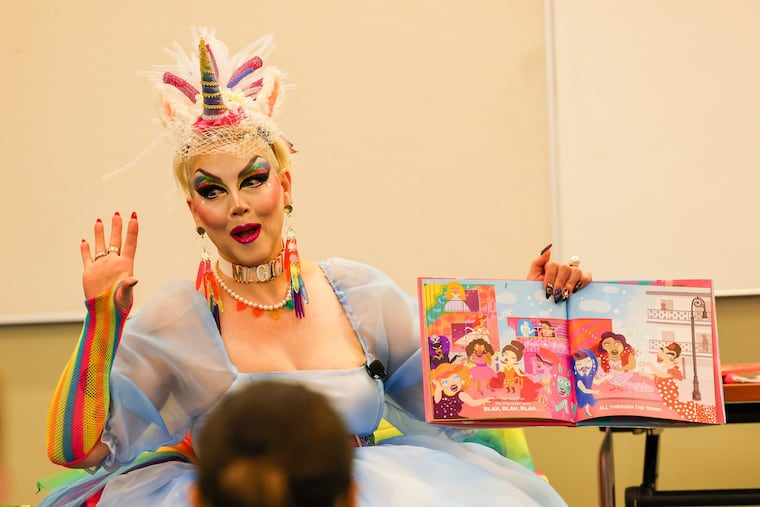Drag queens are no harder for kids to grasp than clowns, Teletubbies, or Disney characters
You can’t shield kids from an entire population just because you’re uncomfortable with the thought of their existence or you think they can’t handle it. They can handle it fine.

Earlier this month, a group of Proud Boys walked into a Drag Queen Story Hour in a California public library, shouting threats and disrupting the event to the point that it had to be canceled. Last week, another group of Proud Boys disrupted a Drag Queen Story Hour at a library in North Carolina, forcing the terrified parents and kids to flee.
In a time when a hugely popular show like RuPaul’s Drag Race has been a reliable Emmy winner, it might seem strange to think that drag queens are under attack. But these attacks are less about drag queens and much more about making LGBTQ allies nervous. That they are happening during Pride month is not a coincidence.
Let’s be clear here. Drag is no harder for kids to grasp than clowns, Teletubbies, or Disney characters. A drag queen is no more confusing to them than a talking pig in a dress, a talking sponge in pants, or a man in wig and makeup trying to sell them Chicken McNuggets. Kids innately understand drag because some form of it makes up a lot of their entertainment already. I know this because that’s exactly how I framed the subject when a child asked me to explain drag queens to them.
When my father was in hospice care, we received the galleys to the book I wrote with my husband, a cultural history of drag queens and other queer performers of the last hundred years. Because he was so proud and excited for me, and because I suspected he wouldn’t be around to see its publication, I went to visit him, copy in hand. Our 5-year-old niece was visiting with her mother at the same time. She saw the cover of our book, a colorful illustration of a dozen impossibly glamorous beings from across LGBTQ history, and asked me who they were and what our book was about.
Once I got the go-ahead from her mom, I explained it exactly how you explain most concepts to the very young: in the simplest terms. Drag queens are people who dress up in outrageous costumes to perform on stage. Some of them sing, some of them dance, some of them tell jokes or stories. And yes, some of them are men, even though they might look more like women when they’re all done up.
I showed her the video to “Kitty Girl,” a song performed on RuPaul’s Drag Race All-Stars. I have such a lovely memory of her watching all of these glittered and wigged characters dance and sing their way across my laptop screen, while my father sleepily smiled in the background. She was enthralled. To her, it was like watching a toy box full of Barbies come to life. She never once asked why men would dress like women — that would be like asking why there are women dressed like Elsa in Disney World or why Daniel Tiger wears a hoodie. Even if she had asked, the answer would have been simple: because that’s the character they want to portray.
» READ MORE: Why I take my kid to Philly Pride
Now that these attacks are becoming commonplace, it’s much more acceptable to ask, “Why do kids need to be around drag queens?” or “Why do kids need to learn about Pride?” But it’s not about whether you think kids should know about these things. They already do. LGBTQ people are all over their entertainment.
You can’t shield kids from an entire population just because you’re uncomfortable with the thought of their existence or you think they can’t handle it. They can handle it fine. Events like Drag Queen Story Hour are about letting kids live in the world that exists, rather than the world as it should exist according to a minority of thinkers. It’s about exposing them to art and joy and self-expression. It’s about teaching them to be true to themselves and to look to the storytellers for inspiration. Don’t let anyone call that shameful.
Tom Fitzgerald is the coauthor of “Legendary Children: The First Decade of RuPaul’s Drag Race and the Last Century of Queer Life,” and copublisher of TomandLorenzo.com along with his husband Lorenzo Marquez.